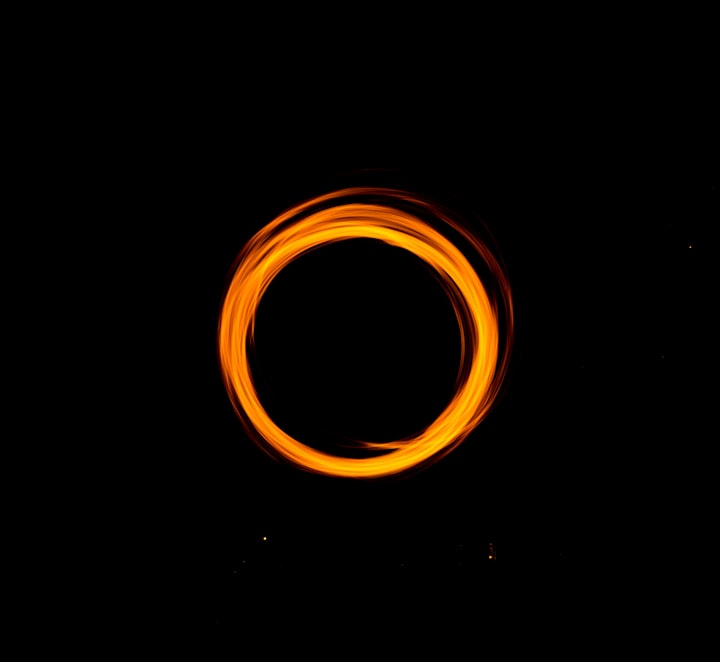
Here's an expanded 800-word version of the creative writing piece about the supermassive black hole Sagittarius A* at the center of our galaxy:
Hey there, cosmic enthusiasts! Ready for a mind-spinning journey into the heart of our galaxy? Strap in as we dive into the latest cosmic gossip about Sagittarius A*, the supermassive black hole throwing a celestial dance party at the center of our Milky Way.
So, what's the scoop? Recent findings from the NASA Chandra X-ray Observatory spill the space-tea on Sagittarius A*'s wild spin, revealing it's not just chilling in the cosmic hot tub – it's stirring the entire space-time pot. I know, mind = blown!
Imagine this: you're 26,000 light-years away from home, observing a cosmic whirlwind. Scientists did just that using the X-ray vision of the Chandra telescope, analyzing radio waves and X-ray emissions in the black hole's food court (aka the accretion disk). Ruth Daly, the cosmic detective leading the study, confirmed Sagittarius A* is twirling, causing what experts call the Lense-Thirring effect – it's like a black hole bringing the whole space-time shebang to its dance party.
Now, why should you care about this cosmic rumba? Well, it's not a space-time crisis, but it's a goldmine for astronomers. Daly spills the space-beans, saying, "It's a fantastic tool to understand how black holes shape galaxies' destiny." Picture Sagittarius A* as the ultimate DJ, remixing the space-time beats and leaving a mark on our galactic jam.
But wait, how do you measure a black hole's twirl? On a scale from 0 to 1, where 0 means it's playing statues, and 1 is the ultimate spin, Sagittarius A* scores between 0.84 and 0.96. Not too shabby, right? Compare this to M87*, a heavyweight black hole 55 million light-years away – it's doing the full twirl with a score of 1 (give or take 0.2). Imagine a space dance-off between these two – Sagittarius A* may be smaller, but it's got the quickstep down!
Daly's team uncovered the cosmic dance-off by using the flow output method, a nifty dance move that combines radio waves and nearby material to reveal a black hole's groove. What's the takeaway? Knowing a black hole's spin and mass helps astronomers read its autobiography – how it formed, evolved, and maybe even dropped a few beats in its cosmic past.
Now, let's dive deeper into black hole history. If it's a lovechild of smaller black holes, it's a slow spinner. But if it's born from a gas gathering, get ready for some breakneck twirls. Sagittarius A*'s spin suggests it's a gas-gatherer – a space DJ with a penchant for a wild party.
Why does this matter? Dejan Stojkovic, our cosmic commentator, says it helps us decode our galactic saga, giving us hints about our Milky Way's past, its structure, and maybe even uncovering some mind-bending secrets like wormholes. Studying Sagittarius A* also sheds light on how matter behaves under such extreme gravitational conditions found only in the direct vicinity of black holes.
We know that Sagittarius A* is about 4 million times the mass of our Sun, making it a relative lightweight in the world of supermassive black holes. And thanks to the Event Horizon Telescope, we also have the very first image of Sagittarius A*’s shadow – proof that there is indeed a black hole at the heart of our galaxy influencing the motion of stars in its clutches.
Combining these breakthrough observations with theoretical models gives us a better understanding of the role Sagittarius A* plays in our galactic ecosystem. As Ulrich Sperhake, an expert in numerical relativity, explains: “Some black holes really like to make themselves visible.” And Sagittarius A* is putting on quite a show!
Its brightness fluctuates unpredictably, probably depending on how much interstellar gas happens to be falling into its maw at any given time. When Sagittarius A* gets hungry, its gravitational pull goes into overdrive, whipping nearby matter into a cosmic frenzy detectable from Earth.
So even though we can’t visualize the black hole itself, we can witness the havoc it wreaks on surrounding space stuff. It's like detecting a tornado from the trail of debris left in its wake. And the chaos doesn’t stop there...
Sagittarius A*’s parties tend to get rowdy, launching powerful jets of high-energy particles deep into intergalactic space. What’s more, its gravity jostles the stars orbiting around it, causing some unlucky ones to get flung out of the galaxy altogether!
No wonder Sagittarius A* is making waves among astrophysicists who want to understand the drivers of cosmic evolution. Unlocking the secrets of this heavyweight black hole phenomenon will hopefully shed light on how galaxies and other large-scale structures took shape after the Big Bang.
In the grand cosmic ballet, Sagittarius A* takes center stage, proving that even in the vastness of space, there's always a twirl-worthy story waiting to be uncovered. So grab your telescope and join the cosmic fiesta – because when Sagittarius A* spins, the entire galaxy grooves!
Stay stellar!
About the Creator
Jorge
Hi! I am Jorge.
I am a physicist specializing in cosmology and superstrings. I am also a writer (out of passion) who likes making science available to everybody, but I write about all kinds of things. Digital privacy is my day job now.





Comments
There are no comments for this story
Be the first to respond and start the conversation.